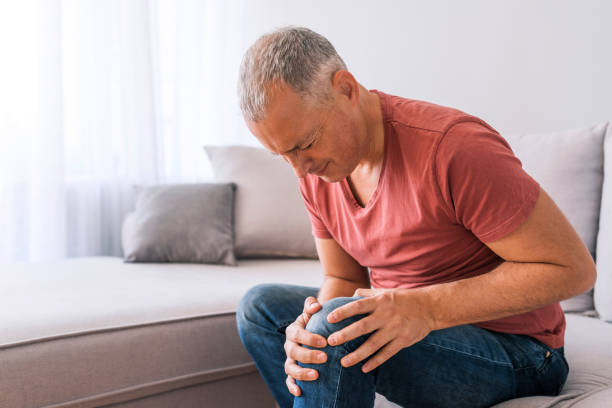Knee pain plasters utilize a blend of cooling effects and active ingredients to address discomfort. They contain compounds like menthol and camphor, which reduce nerve sensitivity. Additionally, herbal extracts and hyaluronic acid contribute to inflammation reduction and joint lubrication. Understanding the specific mechanisms at play reveals how these products provide effective relief. The next section will explore the key ingredients that enhance the efficacy of knee pain plasters.
Understanding Knee Pain: Causes and Symptoms
Although knee pain can arise from various factors, understanding its underlying causes and symptoms is essential for effective management. Common causes include osteoarthritis, ligament injuries, and tendinitis, often resulting in inflammation and discomfort. Symptoms typically manifest as localized pain, swelling, stiffness, or decreased range of motion.
Patients may seek relief through various methods, including knee pain plasters, which provide targeted support and analgesic effects. Recognizing these symptoms and their origins allows individuals to pursue appropriate treatments, enhancing recovery and improving quality of life. Thorough knowledge of knee pain facilitates informed decisions regarding management strategies and therapeutic interventions.
Key Ingredients in Knee Pain Plasters
Knee pain plasters are formulated with a variety of key ingredients designed to alleviate discomfort and promote healing. Common components include menthol and camphor, which provide a cooling sensation and help reduce pain perception. Herbal extracts, such as arnica and ginger, are often included for their anti-inflammatory properties.
Additionally, wellnee patches may contain hyaluronic acid to enhance joint lubrication and promote tissue repair. Adhesive materials guarantee ideal contact with the skin, allowing for effective delivery of these ingredients. Understanding these components can assist consumers in selecting the most suitable knee pain plaster for their specific needs. You can check out Wellnee pflaster verwendung.
Mechanisms of Action: How Plasters Alleviate Pain
While various formulations exist, knee pain plasters primarily alleviate discomfort through a combination of localized cooling, anti-inflammatory action, and enhanced circulation. The cooling effect reduces nerve sensitivity, thereby diminishing pain perception. Anti-inflammatory ingredients target swelling, promoting tissue recovery. Enhanced circulation facilitates the delivery of oxygen and nutrients, expediting the healing process.
Wellnee patches exemplify this mechanism by incorporating effective compounds that penetrate the skin to reach deeper tissues. By addressing the pain source and encouraging recovery, these plasters provide a multifaceted approach to managing knee pain, making them a practical option for individuals seeking relief.
Benefits of Using Knee Pain Plasters
As individuals seek effective solutions for managing knee pain, the benefits of using knee pain plasters become increasingly evident. Knee pain plasters, such as wellnee patches, offer targeted relief by delivering active ingredients directly to the affected area, promoting faster recovery. These patches are convenient and easy to apply, allowing for continuous pain management without the need for oral medication.
Additionally, they provide localized heat, enhancing blood circulation and reducing inflammation. The adhesive nature of wellnee patches guarantees they remain in place, allowing individuals to maintain their daily activities without interruption. Overall, knee pain plasters present a practical option for alleviating discomfort.
Choosing the Right Knee Pain Plaster for Your Needs
How can one effectively select the most suitable knee pain plaster? Consider factors such as the type of pain, duration of use, and skin sensitivity. Various formulations exist, with options for targeted relief and prolonged application. Wellnee patches, for instance, provide a blend of natural ingredients designed to alleviate discomfort while promoting recovery.
Users should assess the adhesive properties to guarantee a secure fit and effectiveness during activity. It is essential to read product reviews and consult healthcare professionals if uncertain. Ultimately, selecting the right knee pain plaster involves understanding individual needs and matching them with the appropriate product characteristics.
Conclusion
To summarize, knee pain plasters leverage a blend of cooling effects and active ingredients to effectively manage pain and inflammation. By utilizing compounds like menthol, camphor, and herbal extracts, these plasters not only reduce nerve sensitivity but also support tissue recovery and joint lubrication.
Their adhesive properties guarantee consistent application, providing ongoing relief during daily activities. Understanding their mechanisms can aid in selecting the most suitable plaster for individual needs and enhance overall knee health.

